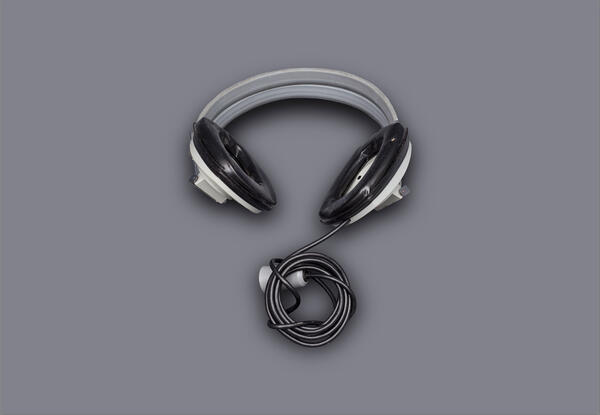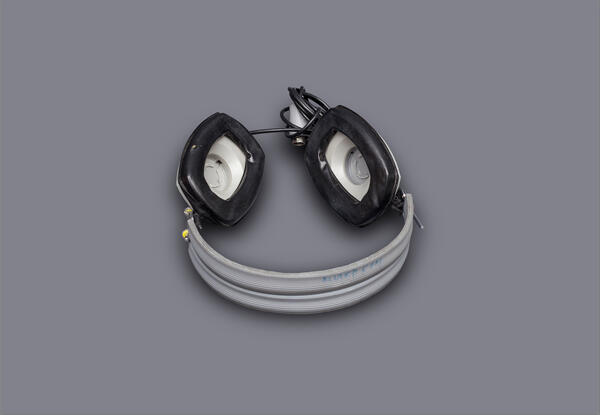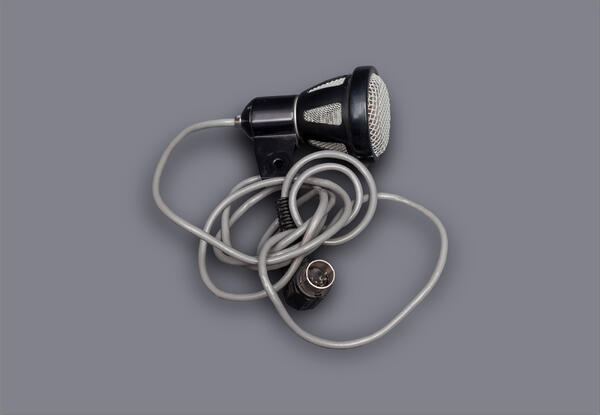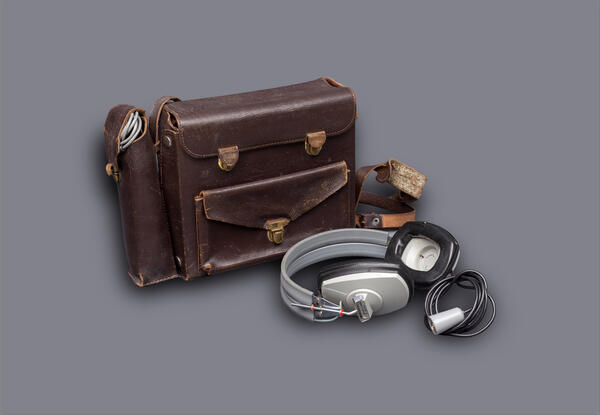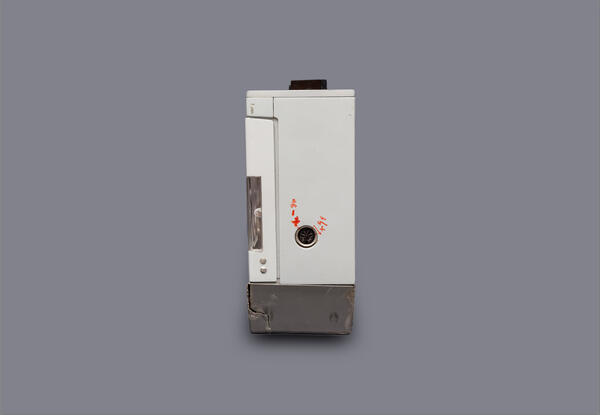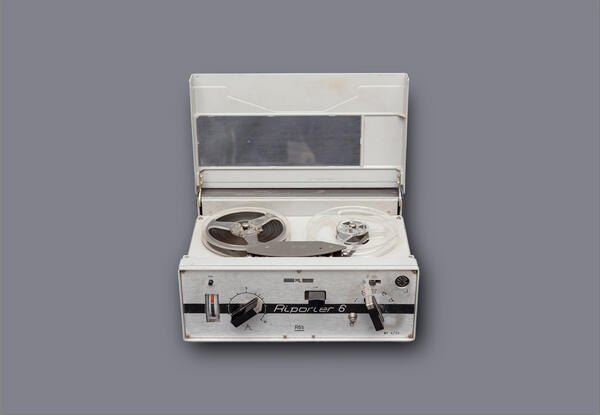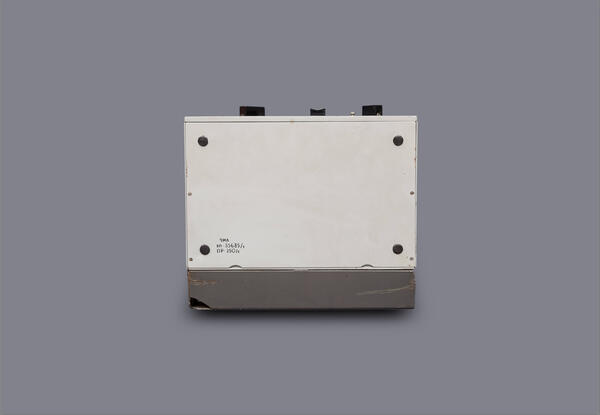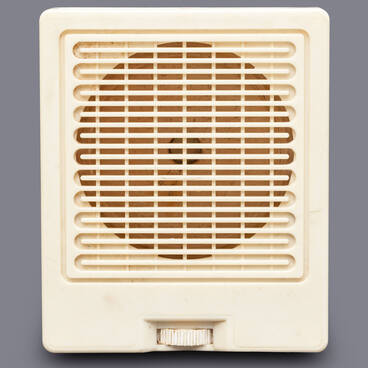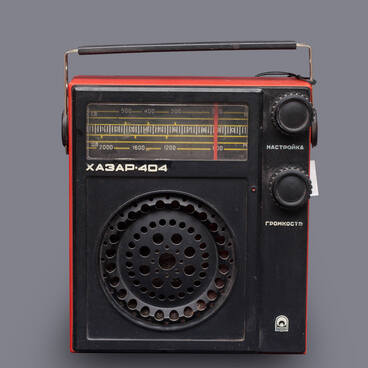The Riporter-6 reel-to-reel tape recorder was developed and produced in the Hungarian People’s Republic since the first quarter of 1970. The model adopted the latest advances in electronics and precision mechanics. The tape-drawing mechanism was powered by a non-contact DC electric motor.
The model was a development of the Riporter-5, which appeared in 1965 and was used by director Leonid Iovich Gaidai in his film “The Diamond Arm”. It was with Riporter-5 that a journalist in a cap interviewed Semyon Semyonovich Gorbunkov near the motor ship Mikhail Svetlov.
The portable recorder Riporter-6 displayed in the collection of the museum was the first to feature a dynamic compressor. It allowed making the most complex recordings on tape. Unlike its predecessor, the device was made in two versions: with a tape speed of 9.53 and 19.05 centimeters per second. The tape could be rewound.
In addition, the tape recorder was produced with Pilot and Neopilot sound heads. Their use made it possible to simplify the synchronization of sound and images of films. The deviation of the tape speed from the nominal one was within 2%, and the duration of continuous recording or playback, 17 to 60 minutes, depending on the tape thickness. 100 mm diameter tape reels were used with the tape recorder.
The sound frequency range was stated by the Hungarian engineers as 60–12,000 Hz. Riporter-6 was power-supplied from six D-type batteries (Mars or Saturn). The tape recorder could also be powered from AC mains (220 and 110 V).
The Riporter-6 recorder could be operated in the temperature range from -10 °C to +40 °C. It was designed to be used with a dynamic microphone. The microphone could be used for auditory control of recordings with the recorder still in the playback mode. The Riporter-6 recorders were distributed in the Soviet Union through the All-Union Association Vneshpriborintorg.
The model was a development of the Riporter-5, which appeared in 1965 and was used by director Leonid Iovich Gaidai in his film “The Diamond Arm”. It was with Riporter-5 that a journalist in a cap interviewed Semyon Semyonovich Gorbunkov near the motor ship Mikhail Svetlov.
The portable recorder Riporter-6 displayed in the collection of the museum was the first to feature a dynamic compressor. It allowed making the most complex recordings on tape. Unlike its predecessor, the device was made in two versions: with a tape speed of 9.53 and 19.05 centimeters per second. The tape could be rewound.
In addition, the tape recorder was produced with Pilot and Neopilot sound heads. Their use made it possible to simplify the synchronization of sound and images of films. The deviation of the tape speed from the nominal one was within 2%, and the duration of continuous recording or playback, 17 to 60 minutes, depending on the tape thickness. 100 mm diameter tape reels were used with the tape recorder.
The sound frequency range was stated by the Hungarian engineers as 60–12,000 Hz. Riporter-6 was power-supplied from six D-type batteries (Mars or Saturn). The tape recorder could also be powered from AC mains (220 and 110 V).
The Riporter-6 recorder could be operated in the temperature range from -10 °C to +40 °C. It was designed to be used with a dynamic microphone. The microphone could be used for auditory control of recordings with the recorder still in the playback mode. The Riporter-6 recorders were distributed in the Soviet Union through the All-Union Association Vneshpriborintorg.


